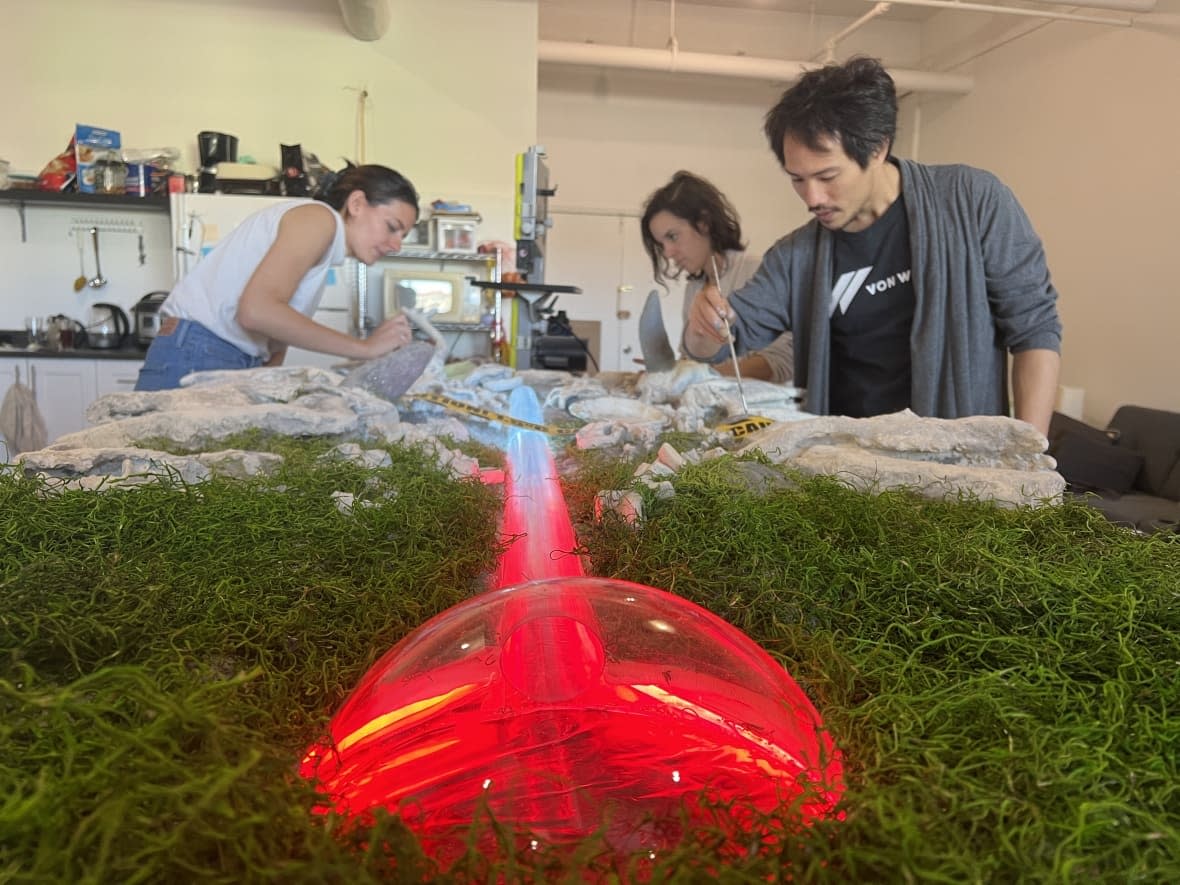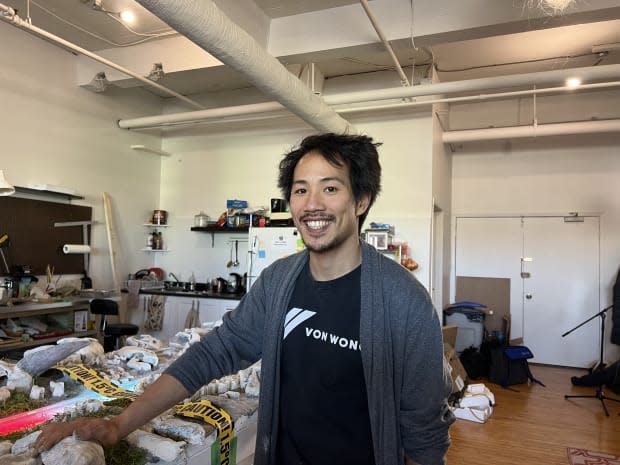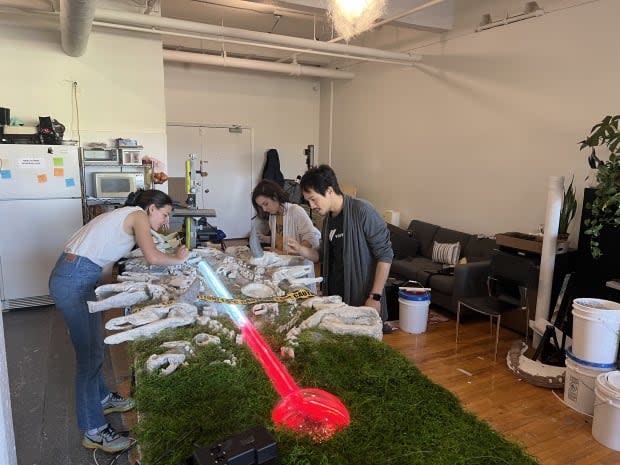No bones about it: Montreal art installation paints bleak picture of our future on warmer planet

The symbolism is clear: A three-metre tall thermometer surrounded by about 20 different types of skulls.
Fanning out from the bottom of the thermometer, where the temperature is lower, is lush, green grass, but as the bright red mercury rises, the envelope loses its vibrancy and becomes a bleak jumble of dried grass, grey dust and ashen bones.
Toronto-born artist Benjamin Von Wong and his team have worked tirelessly on this art installation, which is aimed at showcasing the effects of climate change on our ecosystems — the loss of biodiversity due to a warming planet.
"You'll notice over here life is green and beautiful," Von Wong said, pointing to the lower end of the installation.
"And it slowly dies as we rise up to hit the 1.5-degree celsius limit."

That's the global temperature threshold set by the Intergovernmental Panel on Climate Change (IPCC), a United Nations body, and the target set by the Paris Agreement.
It's the point at which scientists say climate impacts will become increasingly harmful for people and all life on the planet.
That's the inspiration for the Extinction Thermometer, an art installation designed by Von Wong, a McGill University graduate.
It was assembled in Montreal at the Activism Studio on St-Ambroise Street and is on display in the Old Port at the Quai Alexandria.
The aim is to get people talking about the environment as the 15th Conference of the Parties to the Convention on Biological Diversity, also known as COP15, is underway at the city's Palais de Congrès.
Embedded around the thermometer are bones of keystone species from all across North America that could be lost, including the caribou, beaver, grizzly, sea otter, prairie dog, moose, mountain lion, wolf and snowshoe hare — ending with the extinction of humans.

It may sound like the plot of a post-apocalyptic movie, but according to the Wild Species 2020 report, one in five wild species in Canada faces some risk of extirpation — of elimination in the Canadian wild.
The report said that of the 223 wild mammal species known to exist in Canada, 24 are considered to be at risk of being wiped out.
The skulls in Von Wong's installation were crafted with the help of Canadian artist Dana Waldman who told CBC News that the rise in temperature doesn't only affect plants and animals.
"It affects us. We are all connected," she said.
Volunteers have worked on the design for some two weeks. Sing Wong, Benjamin Von Wong's father, is among those chipping in on the project with tools and engineering advice.
"Our environment, as we all know, is not doing well," Sing Wong said. "Some people stick their heads in the sand."
Sing Wong has helped his son on similar projects. Benjamin Von Wong is known for his environmental art installations which he has done around the world, including a photo shoot with about 10,000 plastic bottles in Montreal.
"He is one of the few young people actually doing something meaningful," Sing Wong said.


